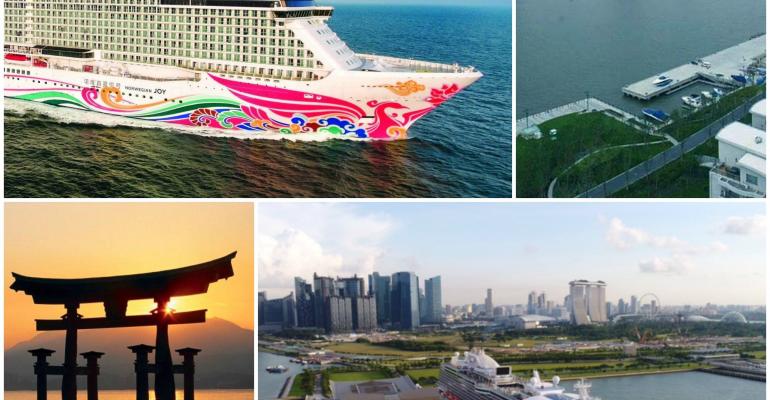Sommer said the double- and sometimes triple-digit growth seen in recent years is not sustainable and what's happening now is a ‘natural correction.'
The NCLH executive called the introduction of Norwegian Joy to the China market last year ‘nothing short of astounding and profitable in year one, carrying 4,500 to 4,800 Chinese passengers every week.’
Zinan Liu, president of China and North Asia Pacific, Royal Caribbean International, said the brand had trimmed its capacity this year due to the ban on Chinese visiting South Korea, but there is renewed commitment in 2019 with the arrival of newbuild Spectrum of the Seas.
‘We are doing well, but not as good as two years ago,' Liu said. He added there is still a long way to go in China before cruising is a lifestyle as in North America, where repeat cruisers can range between 70% and 80%, compared to just 15% in China.
Madame Wang, secretary general CPC Baoshan District of Shanghai Municipal Government, spoke of the Chinese government’s ongoing commitment to support the cruise industry and described infrastructure developments in Shanghai, including new berths at Wusongkou in Baoshan district due to become operational next month, the creation of a 90mtr wide channel to allow two large ships to pass at the same time and the desire to ease visa restrictions.
Turning to Japan, Bruce Krumine, vp shore excursions, Holland America Group, described Princess Cruises' product as 'one of few countries where we take people to cruise in their own.’ He said when Princess started sailing in Japan five years ago, the line did not expect so much interest from travelers in the rest of the world. Also, the Japanese are looking for unique experiences from their own country whilst the international passengers seek to discover the traditional Japan.
John Tercek, vp commercial development, Royal Caribbean Cruises Ltd., noted that in the past two to three years ports in Japan had invested in new cruise infrastructure, which 'averted the crisis we were facing a few years ago to find suitable berths for larger cruise ships.’
The future of cruising in Southeast Asia is very positive, noted Yap Chin Siang, assistant chief executive, Singapore Tourism Board. He reminded Seatrade delegates that Southeast Asia's middle class is expected to grow from 190m in 2012 to half a billion in 2030.
Aside from attracting local passengers to join ships in Singapore, there has been tremendous growth in India and China source markets, he said.
ASEAN countries are collaborating to promote cruising in the region and are studying implementing a single common visa policy for cruising to streamline the regulations.
Copyright © 2024. All rights reserved. Seatrade, a trading name of Informa Markets (UK) Limited. Add Seatrade Cruise News to your Google News feed.


